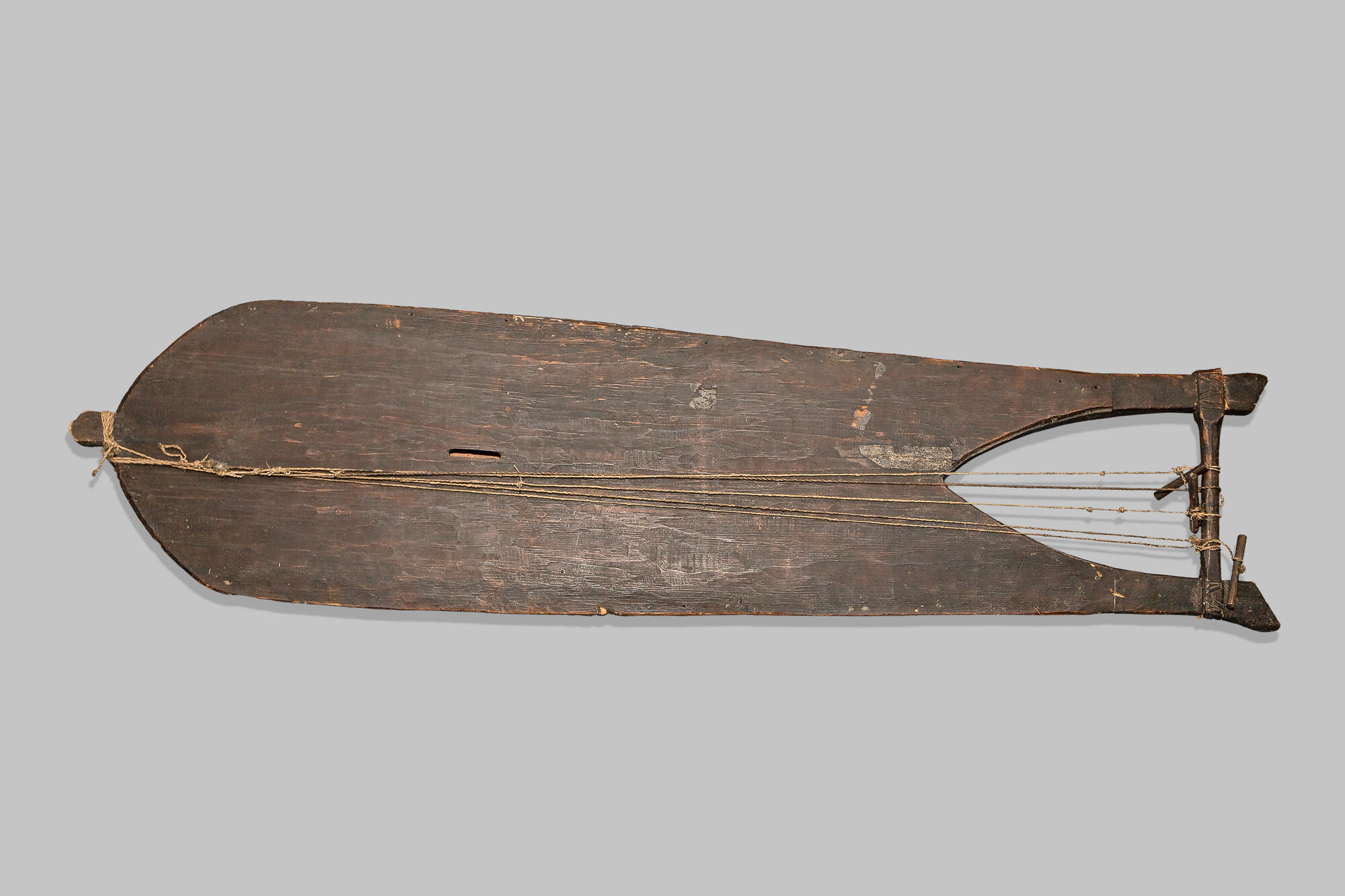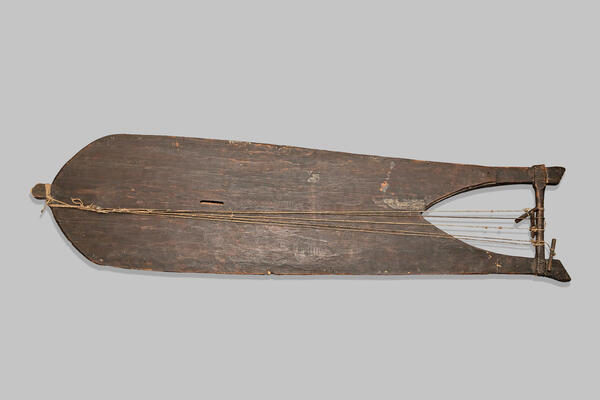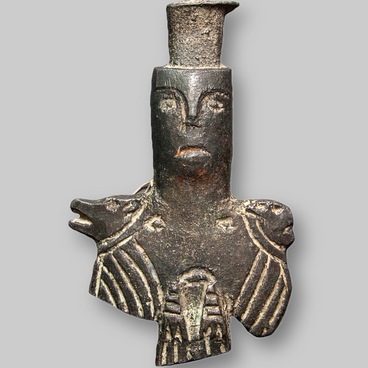The national art of Khanty and Mansi, their rituals and holidays are inextricably linked with music. The earliest extant descriptions of music-making by the Khants and Mansi are fragmentary. They are contained in Russian chronicles of the 11th - 14th centuries. At the same time, representatives of these peoples have not lost their skills of playing their musical instruments. One of them, a five-string plucked zither with a resonator box, is exhibited at the Tobolsk Provincial Museum.
The museum’s zither is made by hand. The master hollowed out the body from a single piece of wood, gave it a classic navicular shape, and painted it in a dark color. The soundboard was cut from a thin plate, and it completely repeats the shape of the zither body. Closer to the sharp end of the case, the master made an elongated resonating through hole in the soundboard. The instrument has five strings made of animal tendons, which are attached at one end to a crossbar in the aft part of the body and are tuned using pegs in the form of small sticks.
Previously, the zither was an exclusively male instrument. It was accompanied when singing heroic songs about the exploits of legendary heroes. But recently, women have also started playing it more often. The zither was often played at a bear festival when singing solo or dancing. Each representative of the Khanty had at least two personal name songs of their own. A children’s song was given to the child shortly after birth, and an adult song was composed by themselves when they came of age. Some of the them also had a personal named instrumental playing. They were often picked up on five-stringed zithers. These musical amulets accompanied the owner all their lives.
Sometimes the harp was used by the shamans during rites instead of the tambourine. At the same time, shamans never sold the instrument, having believed that by selling it, they would sell their soul. Before moving the zither to another place, it was covered with a handkerchief and carried out of the house ‘head’ forward as a sign of special respect and reverence.
When playing, the zither was placed horizontally on the lap by turning it to one side. The musician’s hands rested lightly on the edge of the instrument. They played the instrument with two hands. One was used for pinching the strings, and the other for muffling them. Sometimes both hands of the musician participated in conducting the melody.
The museum’s zither is made by hand. The master hollowed out the body from a single piece of wood, gave it a classic navicular shape, and painted it in a dark color. The soundboard was cut from a thin plate, and it completely repeats the shape of the zither body. Closer to the sharp end of the case, the master made an elongated resonating through hole in the soundboard. The instrument has five strings made of animal tendons, which are attached at one end to a crossbar in the aft part of the body and are tuned using pegs in the form of small sticks.
Previously, the zither was an exclusively male instrument. It was accompanied when singing heroic songs about the exploits of legendary heroes. But recently, women have also started playing it more often. The zither was often played at a bear festival when singing solo or dancing. Each representative of the Khanty had at least two personal name songs of their own. A children’s song was given to the child shortly after birth, and an adult song was composed by themselves when they came of age. Some of the them also had a personal named instrumental playing. They were often picked up on five-stringed zithers. These musical amulets accompanied the owner all their lives.
Sometimes the harp was used by the shamans during rites instead of the tambourine. At the same time, shamans never sold the instrument, having believed that by selling it, they would sell their soul. Before moving the zither to another place, it was covered with a handkerchief and carried out of the house ‘head’ forward as a sign of special respect and reverence.
When playing, the zither was placed horizontally on the lap by turning it to one side. The musician’s hands rested lightly on the edge of the instrument. They played the instrument with two hands. One was used for pinching the strings, and the other for muffling them. Sometimes both hands of the musician participated in conducting the melody.



